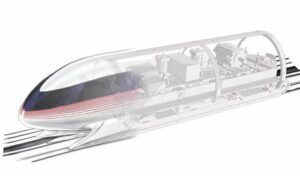Get ready to dive into the revolutionary concept of hyperlocal warehousing and its game-changing impact on the e-commerce landscape!
The e-commerce industry has witnessed tremendous growth over the past decade, driven by changing consumer behaviors and the widespread adoption of online shopping. As customer expectations for faster delivery and seamless shopping experiences continue to rise, e-commerce companies are seeking innovative solutions to optimize their fulfillment processes. One such solution that holds great promise is hyperlocal warehousing. In this article, we will explore the concept of hyperlocal warehousing, its potential benefits for e-commerce fulfillment, and its role in shaping the future of the industry.
Understanding Hyperlocal Warehousing
Hyperlocal warehousing is a fulfillment strategy that involves placing small distribution centers or fulfillment centers in close proximity to high-density urban areas or concentrated customer bases. Unlike traditional centralized warehouses located in remote areas, hyperlocal warehouses are strategically positioned in or near major cities and urban hubs. The goal is to reduce the distance between the storage facility and the end consumers, enabling faster and more efficient order fulfillment.
Benefits of Hyperlocal Warehousing in E-Commerce Fulfillment
- Faster Delivery Times: By bringing fulfillment centers closer to customers, hyperlocal warehousing significantly reduces the distance traveled to deliver orders. This leads to shorter transit times, meeting the growing demand for speedy deliveries, and enhancing the overall customer experience.
- Same-Day and Next-Day Delivery: Hyperlocal warehousing enables e-commerce companies to offer same-day or next-day delivery options, elevating their competitive edge and meeting the expectations of time-sensitive consumers.
- Cost Efficiency: While the initial investment in setting up hyperlocal warehouses may be higher, the reduction in transportation costs, especially last-mile delivery expenses, can lead to long-term cost efficiencies.
- Inventory Optimization: Hyperlocal warehouses facilitate better inventory management and optimization. Companies can stock popular products in these centers, ensuring that high-demand items are readily available for immediate dispatch.
- Reduced Environmental Impact: Shorter transportation distances and optimized delivery routes in hyperlocal warehousing contribute to a reduced carbon footprint, aligning with sustainability goals and environmental responsibility.
- Flexibility and Scalability: Hyperlocal warehouses offer greater flexibility and scalability for e-commerce companies. As customer bases grow or change, new hyperlocal centers can be established to adapt to shifting demand patterns.
The Role of Technology in Hyperlocal Warehousing
The success of hyperlocal warehousing relies heavily on advanced technologies that streamline operations and enable real-time inventory tracking. Some key technologies that play a crucial role include:
- Warehouse Management Systems (WMS): WMS platforms manage inventory, orders, and fulfillment processes efficiently. They enable real-time inventory visibility and automation of tasks, improving accuracy and speed.
- Order Management Systems (OMS): OMS solutions optimize order processing and fulfillment across multiple channels and warehouses, enabling seamless coordination in hyperlocal fulfillment.
- Data Analytics and AI: Data analytics and artificial intelligence can analyze customer behavior, demand patterns, and transportation routes to optimize inventory placement and predict demand fluctuations.
- Last-Mile Delivery Solutions: Technology-driven last-mile delivery solutions, such as route optimization software and delivery tracking apps, improve the efficiency of the final leg of the delivery process.
Hyperlocal warehousing represents a transformative solution for e-commerce fulfillment, paving the way for faster, more efficient, and customer-centric delivery experiences. As the e-commerce industry continues to evolve, meeting consumer expectations for swift deliveries becomes a critical competitive advantage. By strategically placing fulfillment centers closer to customers, e-commerce companies can unlock new opportunities for growth, customer loyalty, and operational excellence. Embracing advanced technologies that support hyperlocal warehousing will be essential for companies seeking to stay ahead in the ever-evolving e-commerce landscape. As hyperlocal warehousing gains traction and becomes a standard practice in e-commerce fulfillment, businesses can embrace a future where deliveries are not just timely but tailored to meet the needs of individual customers. The future of e-commerce fulfillment is, indeed, hyperlocal.
The Perfect Planner Team is here if you have any questions about Hyperlocal Warehousing, and we offer a free consultation service. If you would like to connect with us on this article or any other topic, please message us on LinkedIn, shoot us an email at info@perfectplanner.io, visit our website at www.perfectplanner.io, or give us a call at 423.458.2979.
Author: Thomas Beil
Publication Date: March 28, 2024
© Copyright 2024 Perfect Planner LLC. All rights reserved.






